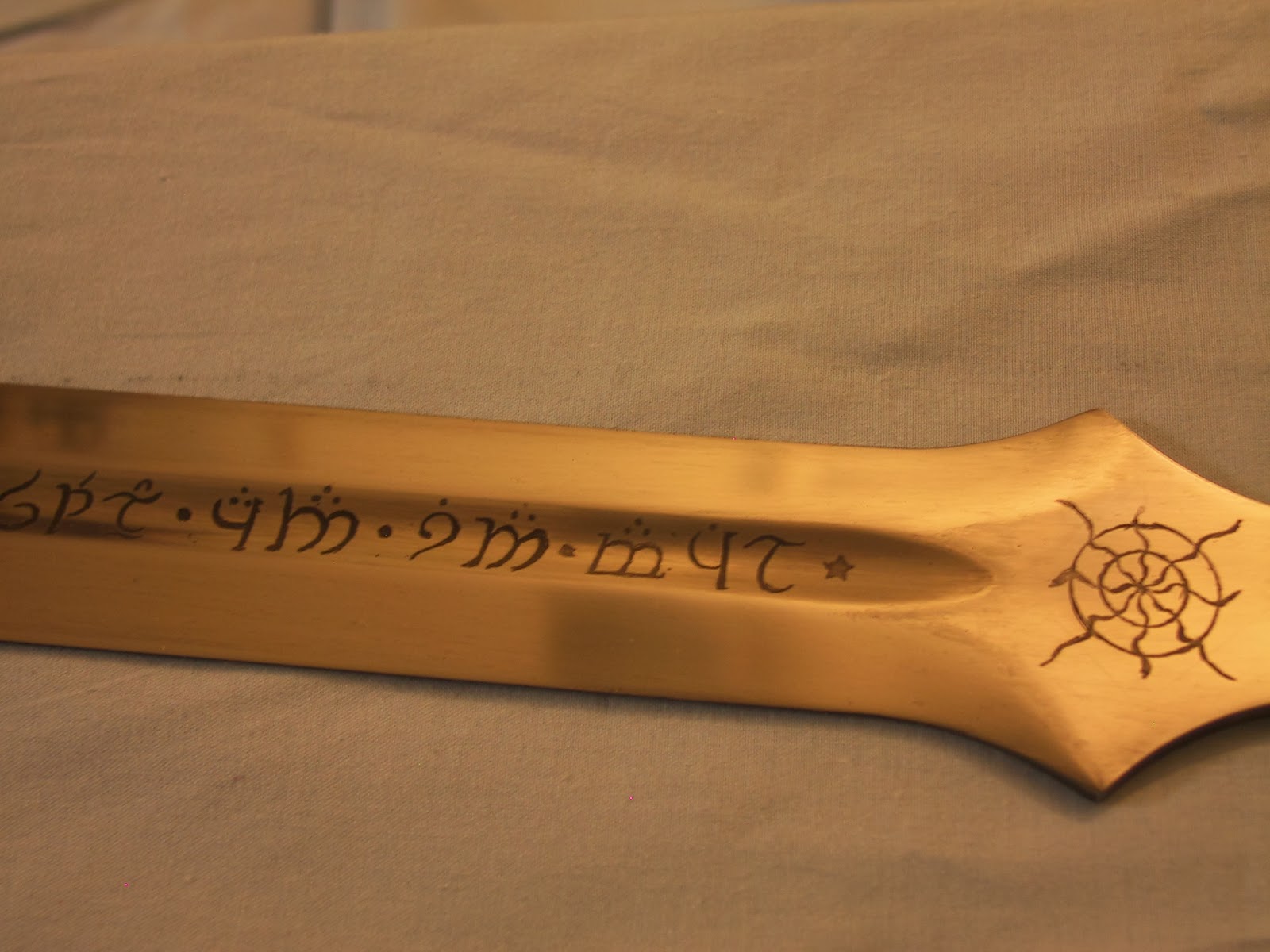So I finally had the bare "Glamdring" blade in hand. What next? Well, the description in the Museum Replicas catalogue had this interesting tidbit: "Both the blade and pommel cry out for runes or other decorations, so we invite you to join in and elaborate on the creation of this fantasy sword." (emphasis added)
Oh, really? Well, challenge accepted!
At this point all those many years ago I had not really settled on a hilt design, but it occurred to me that I could at least decorate the blade with "runes or other decorations." And so I began a mini-journey to develop a "runic" inscription and other decoration that I felt would be consistent with J.R.R. Tolkien's Middle Earth. Actually, this proved to be a more extensive travail than I initially realized!
The first part of this self-imposed quest was to develop a brief "back-story" for this sword. That almost overstates it, though. Mostly I just wanted to place it in a setting within Middle Earth that would be internally consistent with Tolkien's writings, which would also drive both the alphabet and the language used to make the inscription, as well as the content of same. I decided to make it a sort of "mate" to the well known swords from The Hobbit and Lord of the Rings, namely Orcrist and Glamdring, thus placing it within the hidden kingdom of Gondolin in the First Age during the War of the Jewels.
As I wanted a Quenya rather than a Sindarin inscription, I decided that the sword was forged in Nevrast, as opposed to being made in Gondolin proper, since the Ban on Quenya that arose after the revelations about the Kinslaying in Aqualonde would have virtually mandated the use of Sindarin (as was done, apparently, with Orcrist and Glamdring - though in a late writing Tolkien states that King Turgon and his immediate household disregarded the Ban and used Quenya anyway).
With the language settled, I proceeded to come up with a name. I went through a number of possibilities, some inspired by the MERP supplement Treasures of Middle Earth, but in the end settled upon a name of my own invention, "Helkaluinil", which is Quenya for "Ice Blue Star." The inscription in the Tengwar script looks like this:
I then came up with a secondary inscription for the other side of the blade. It simply reads,
“ni Mithlor Nevrastello kanta sina makil.” which translates as, "I,
Mithlor of Nevrast, made this sword." Note that the smith's name, Mithlor (stated to be a master Noldo smith of Gondolin in the MERP supplement Elves), does not appear to be one that Tolkien invented. The Tengwar script reads thusly:
There was one other detail I wanted to include, namely heraldic devices appropriate to the House of Turgon. Well, Tolkien never actually drew one for Turgon, though he did draw them for his father, Fingolfin, and Idril Celebrindral, his daughter:
Based on these two examples, I extrapolated a hybrid that has features of both, to approximate what might have been Turgon's which I then etched in outline only onto the sword blade with ferric cloride (note that I never finished coloring the emblem, since I only needed the outline, though I think I will make an effort to finish it for posterity; I will post it as an addendum to this series when I get it done). Here then is the end result:
Note that the side with the sword's name has this hypothesized House of Turgon emblem, while the side with the maker's inscription has that of the House of Fingolfin. It is also worthwhile to point out that both emblems largely follow the rules of Elvish heraldry, in that they are basically "square" rather than "lozenge" oriented, as befits a general depiction of a house allegiance, as opposed to a personal emblem.
With that complete, it would be years before further progress was made. To be continued in Part Three...







